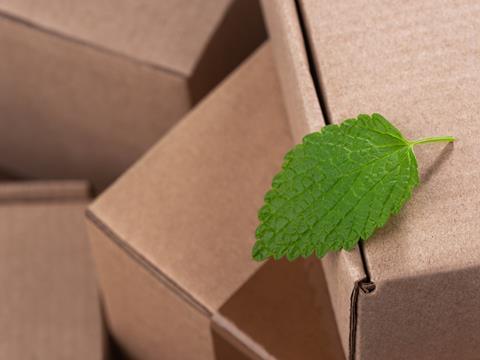
The impending adoption of the Packaging and Packaging Waste Regulation (PPWR) to replace the 30-year-old Packaging and Packaging Waste Directive 94/62/EC, is once again making Europe a focus for sustainable packaging innovation.
These changes, and the impact across the packaging value chain, are examined in a recent free White Paper – A framework for understanding the Packaging & Packaging Waste Regulation (PPWR) – from Smithers, the leading consultancy for the paper, print, and packaging industries.
European policy makers have yet to decide on the final text of the PPWR, but there is a consensus that it will be used to mark a major milestone in the EU’s journey towards a circular economy for packaging and enhanced recycling.
Recycling targets and PCR
Central to the PPWR reform is to increase the volumes of packaging waste recovered in the EU 28. The latest draft text recommends increasing these to 50% for plastic, 50% for aluminium, 70% for ferrous metals, 70% for glass, and 75% for paper and cardboard by 2025; with further incremental increases in 2030.
This will be more challenging for some segments than other, especially plastics. This disparity comes about because economic factors have long made recovery of metal, fibre, and glass attractive; while polymer recovery has been infeasible commercially. A circular economy for commodity plastics will only come about as, and when, viable end-use markets for post-consumer recycled (PCR) plastics are created. To stimulate this, Article 7 of the PPWR reform proposes creating an obligation for any plastic packaging, or plastic part to contain a minimum of 35% PCR, although there are derogations for contact-sensitive applications, such as food.
Many packaging manufacturers are keen to convert PCR resins in a new generation of packaging. There are many technical issues however, including PCR resin purity, colour, and processing performance. Smithers data show that in 2021 use of PCR plastics in new packaging applications in Europe was 2.16 million tonnes, ongoing investment coupled to new regulatory pressure is forecast to push this to over 3 million tonnes by 2026.[1]
With high volumes of rigid plastic packaging used in food and beverage applications, there are additional safety concerns. Europe does have a burgeoning market for recycled polyethylene terephthalate (rPET) approved for food contact; but technology to decontaminate polyolefin materials is much more challenging. The PPWR’s mandated recovery targets can be expected to encourage recycling of more formats, wider deployment of superior sorting and processing equipment, as well as the commercialisation of chemical recycling of plastics in Europe.
Monomaterials & performance coatings
Among the most important changes in the PPWR is an obligation to make all packaging recyclable by 2030. This will necessitate redesigns of many packaging formats, including moving towards more simple, mono-material designs and embracing innovations in barrier coatings.
The imperative for mono-material constructions is most evident in flexible plastics, substituting away from aluminium or high-barrier polymer layers to pure polyolefin material sets that are easier to recycle at end-of-life. Across Europe, Smithers data show that in 2023 total value for mono-material packaging films will be $17.82 billion (€16.49 billion), up from $11.88 billion in 2018. [2]
The consumer emphasis on recyclability is leading many brand owners to consider switching from plastic to paper in primary packaging, and the PPWR will only accelerate this trend. In many applications, especially in foods, barrier performance and moisture resistance need to be incorporated to make fibre packaging a viable alternative. This is sparking high levels of R&D investment, especially in paperboard coatings that can be recycled in standard fibre recovery schemes. Across Europe, Smithers data show that in 2023 paperboard formats will consume a total of 921,100 tonnes of such coatings. Strong additional growth is forecast with volumes increasing to 1.11 million tonnes in 2028.[3]
Re-use and refill
Europe has also been a proving ground for trialling re-use and refill concepts, breaking consumer’s reliance on single-use packaging. While popular as a novelty, and with the most ethically minded consumers, advancing these as a mass-market solution poses further problems.
The PPWR reform text from the European Commission, initially suggested establishing specific targets for 2030 that re-use/refill formats account:
- 10% of soft drinks, beer, and ready-to-drink (RTD) alcoholic beverage packaging
- 10% of packs for take-away foods in the hotel and catering industry (HORECA)
- 20% of HORECA beverage packaging.
Reports from April 2023, however, are that the European Parliament’s team negotiating the final content of the PPWR has removed the last two of these from its amended text. This was done on the grounds that ‘the environmental benefits of re-use in the food and drink takeaway sector are difficult to prove’ at the current time.
The Smithers White Paper – A framework for understanding the Packaging & Packaging Waste Regulation (PPWR) is available for free download here:
https://www.smithers.com/resources/2023/may/understanding-ppwr-white-paper
For more information on Smithers market consultancy services please visit:
https://www.smithers.com/services/consulting/strategic-consultancy
[1] The Future of PCR Packaging to 2026, Smithers, Q3 2022
[2] The Future of Mono- vs Multi-material Plastic Packaging to 2028, Smithers, Q1 2023
[3] The Future of Functional and Barrier Coatings for Paper and Board to 2028, Smithers, Q2 2023
If you liked this article, you might also enjoy:
The Lidl approach to packaging sustainability
How did Brazil achieve its 100% aluminium can recycling rate – and can it be replicated in the EU?
Experts have their say on the EU’s Packaging and Packaging Waste Directive revisions
A deep dive into the most important packaging sustainability trends and solutions











No comments yet